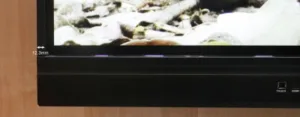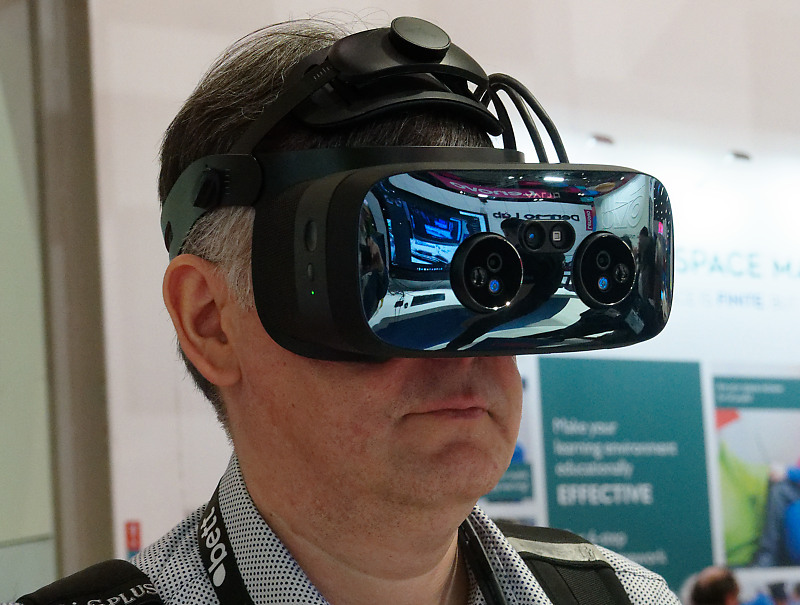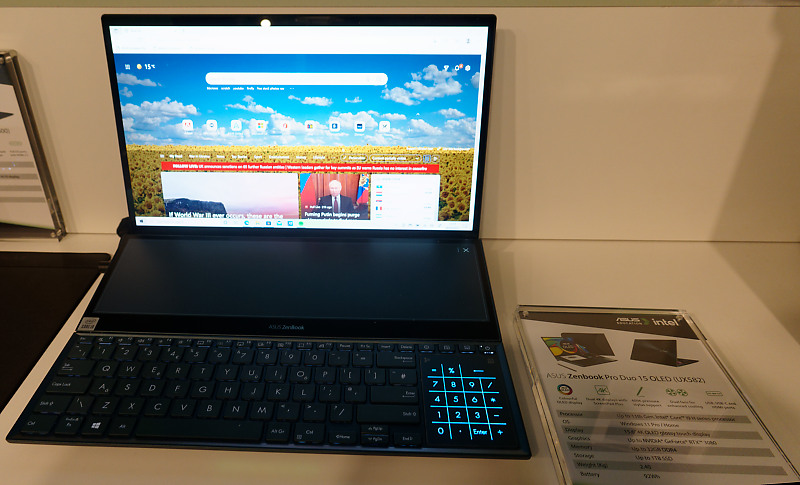Last week I reported on the ‘big picture’ view of what I learned at BETT in London last week. Today I’ll add some detail on the products and technology that I saw.

ViewSonic updated me on its full range of 43″ to 98″ interactive flat panels which are nearly all sold with infrared sensors, as PCap continues to be too expensive for most uses. We talked about ‘huddle rooms’ and the firm told me that a lot of smaller panels from 43″ to 55″ are mounted on trolleys and moved around from place to place.
ViewSonic was the first brand to raise that larger sizes have now become more popular and 75″ is now the single largest size for the firm and even 86″ is now increasing in share. The panels include OPS for upgrading to PCs and Windows, although they have integrated Android functionality.
The company told us that it has been doing well with projection in the UK. There is a lot of excitement about a new DLP projector with WXGA (1280 x 800) resolution that is due shortly and is based around an LED light source. Despite the LED source, the output is 3,000 Ansi Lumens and the price is very competitive. In fact, on looking online, I found the LS550 unit available for £498 (inc VAT – $545 + tax). Given that the unit has a five year warranty, it really is something of a steal! It is also available with a UST lens as the LS550WH. The wider lens (0.49 throw ratio) brings the price up to £598 (inc VAT – $650 + tax) but that is still an excellent price for this much function.
ViewSonic will have a FullHD version in October and has high hopes of success with that model, too. Where budgets are restrained, projection remains a real alternative for educators. Personally, I have always found the LED-based projectors to have really good colour – I look forward to seeing reviews of this range.
Lenovo Highlights VR
One of the disappointments of the show, to me, was the loss of interest in VR for education. Len has written about this and it was evident at the show by the lack of demonstrations. However, Lenovo did have a couple of areas highlighting the technology. The first was a demonstration of the Varjo XR-3 headset. This headset was announced in December 2020 (You Can’t Make Things Better and Cheaper, or Can You?) but this was the first chance I have had to try it out. Lenovo has a deal to resell Varjo headsets (Lenovo Becomes Reseller of Varjo Headsets to Deliver Complete Solution for Virtual and Mixed Reality Applications). The XR-3 is the version of the headset with tracking cameras.
The demonstration was very impressive, although brief. On the booth, Lenovo had set up a virtual model of an Aston Martin that you could investigate. As has been apparent in all the demos that I have seen from Varjo since AWE Expo the integration of the car model with the real world using the cameras was very impressive. I kept reaching out to touch parts of the car. I also tried moving my hand rapidly in front of the cameras and that confirmed Varjo’s claims that the latency from camera to display is really very low indeed. The headset is quite heavy and I had some trouble getting it aligned, initially, but for professional use, the benefits would overwhelm those constraints.
Lenovo pointed out that the headset was running on a very high end PC with a top-of-the-range Nvidia GPU to ensure good performance. The pain in the salesman’s eyes when it came to discussing prices showed that there were few that were likely to take advantage of the technology at the BETT show! Training, including pilots and other military, architectural walkthroughs and product design, especially automotive, remain the key markets, we heard.
Lenovo also had it’s Pico VR S3 headset. This is a collaboration between the two firms. Unfortunately, the demonstrator was really there to show software (Uptale) so couldn’t tell us much about the headset. The performance was OK, but after the Varjo, the pixellation and colour fringing were very apparent although so was the lighter weight. The Uptale exhibitor was from France, so I checked the status of the Laval Virtual event. It is going ahead from 12th to 14th April (although the website was causing my system to have security concerns when I tried to get details. If you are in Europe and you care about VR and AR, the event is definitely, as the Michelin Guides say ‘vaut le detour’.
Vestel was highlighting the range of sensors on its IFPs. The firm, as we have reported, had a head start in the interactive market with the huge Fatih project in Turkey ten years ago. Adding sensors is a very good idea, in my view. Increasingly, organisations want to be able to monitor and control different areas of their buildings from central locations. Adding sensors to increase the functionality of the display will help to get them adopted.
New developments include the introduction of a range of premium products in the future that will use optical bonding to improve visual performance as well as USB Type-C PD with up to 100W available for PC connections.
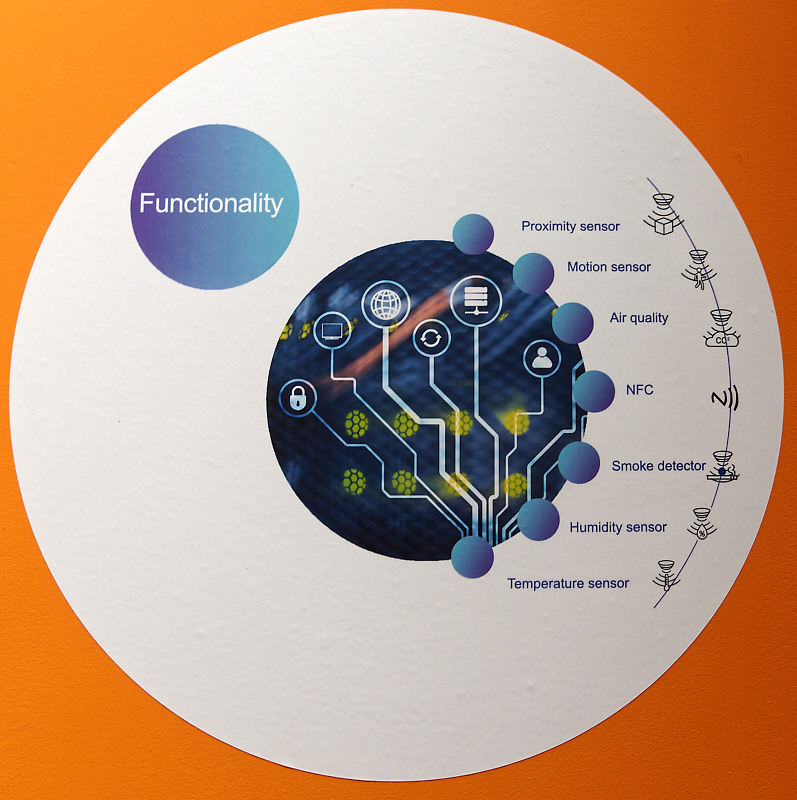 Vestel is increasing the range of sensors on its displays. Image:meko
Vestel is increasing the range of sensors on its displays. Image:meko
We asked how the small pixel pitch market was going for the firm and we heard that at the moment the smallest pitch it has available is 2.5mm, but this will drop down to 2.0mm before the end of the year and down to 1.56mm by 2023.
More IFDs
BenQ was in a very positive mood at the show – it had on its booth a bus that it has been taking around as a roadshow to show off its products. The firm told us that at one major retailer in the UK, it had demonstrated its conferencing display solution (with Zoom-certified cameras) and won an order for 500 systems – one for each store. In the interactive space it has three levels of product – Entry, mainstream and premium with features including silver-embedded glass on the mainstream and premium series to give long term anti-microbial protection. The Premium range can use NFC to connect mobile devices to the display as passwords are considered to be not secure enough in some education settings.
Starboard (the business that was once part of the Hitachi empire, but which is now independent) was one of the few companies with some new technology at the show – in this case much smaller bezels. We asked for the dimensions, but they weren’t to hand. Fortunately, we know how to do these things and confirmed that the width of the infrared bezel was just 12.3mm.
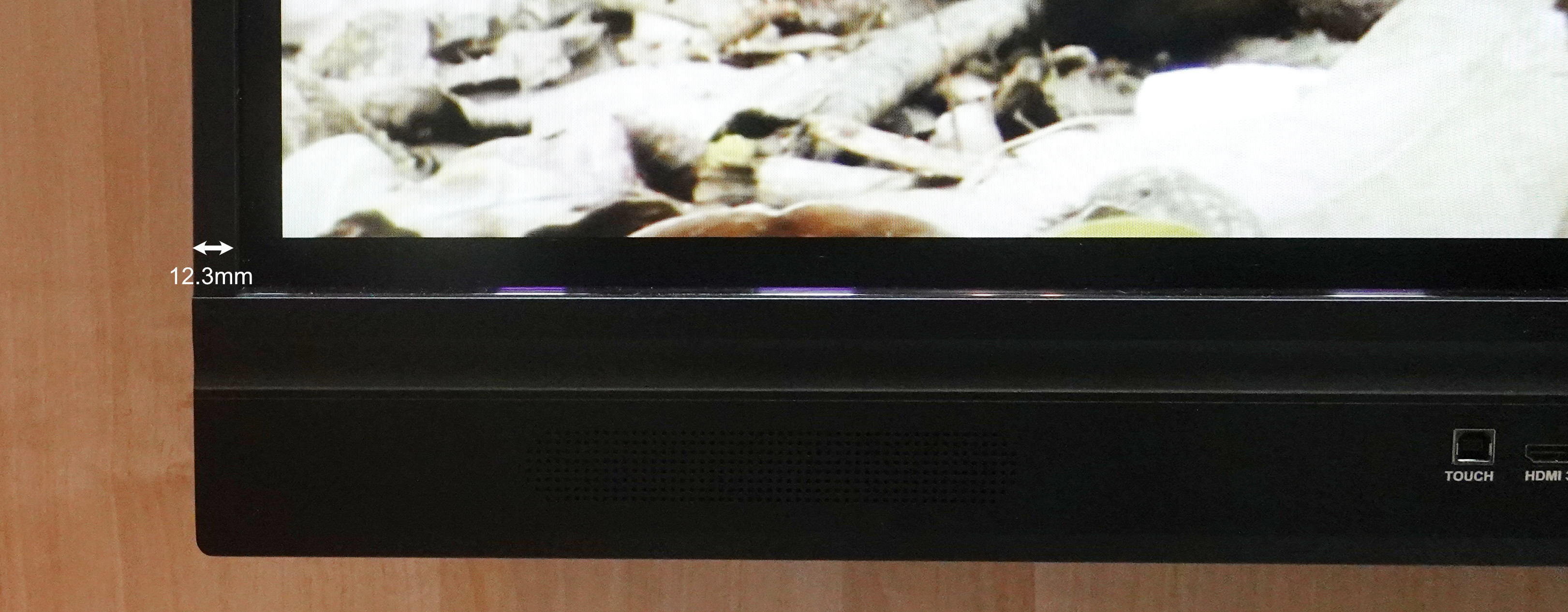 StarBoard had a very narrow bezel for an infrared-based IFDs. Image:Meko. Click for higher resolution
StarBoard had a very narrow bezel for an infrared-based IFDs. Image:Meko. Click for higher resolutionCTouch had its older products, but with a new fabric coating that can be customised for different colours in 55″/65″/75″ and 86″. Newline had a new software interface for its displays and Smart add NFC to its displays. It also had a new ‘block recognition’ mode that can use the touch system to identify objects, but the company didn’t have any specialists available that could tell us about it, although the firm told us that it exploited the high number of touches that its displays can recognise.
Other Items
As I mentioned last week, most of the PCs and displays shown at the event were entry level for the classroom and there were few exceptional displays. However, Asus had a couple of OLED-based notebooks including the Zenbook Pro Duo 15 OLED (UX582) which adds a second touch-enabled LCD display between the main 15.6″ UltraHD OLED display and the keyboard. The main display looked good to me, but the secondary display really suffered in comparison. I can see how this design would be useful, although I think I would prefer a secondary add-on display. Still, it’s good to see companies trying new design ideas. (BR)
Note – we moved this article outside the paywall so that it counts as only one when viewed with Part 1, if you don’t have a paying subscription (Catching Up with Education At BETT 2022 – Part 1)

